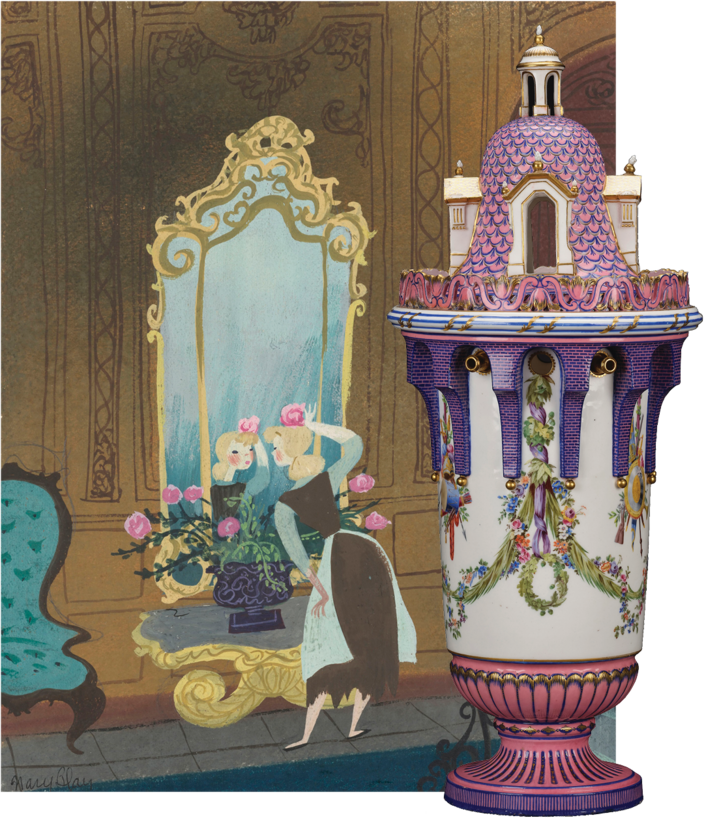Back in the day, Walt Disney’s animators were meticulous about their research. To get the deer and other animals in Bambi right, they trooped off to the zoo for observation and sketching, then wrangled fawns, does, rabbits, and who knows what else into the studio for more of the same. Disney’s fairy-tale features didn’t aspire to quite that level of naturalism—no one at the studio was dissecting pixie anatomy—but neither did they lack for real-world grounding.

A new exhibition at the Metropolitan Museum of Art, “Inspiring Walt Disney: The Animation of French Decorative Arts,” shows just how indebted Disney and his corporate heirs were to 18th-century Europe for the style of two classics, Cinderella (1950) and Sleeping Beauty (1959), along with the latter-day Beauty and the Beast (1991). The show features 60 pieces mostly drawn from the Met’s collections—clocks, vases, teapots, assorted porcelain tchotchkes—alongside concept art, character studies, and background paintings from several Disney archives and collections.
Bottom line: if you’ve been cursing Uncle Walt for your toddler daughter’s obsession with princessy pinks, glittery curlicues, and flounces of all kinds, this show will convince you that long-dead artisans of la belle France must also shoulder some blame.

“Both Disney animated films and Rococo decorative works of art are infused with elements of playful storytelling, delight, and wonder,” Max Hollein, the Met’s director, has observed. At times, though it wouldn’t have been politic to say so, an element of eager-to-please kitsch also factors in, on both sides of the equation.
It’s not surprising that Disney artists would draw on the Rococo for Cinderella, Sleeping Beauty, and Beauty and the Beast, since all three films are based on 18th-century French fairy tales (the tales’ written versions, that is). But as the exhibition points out, there’s an almost spiritual kinship, too: a lot of pieces on display look like they’re almost itching to be animated.

Take a madly swirling gilt candlestick, dated 1735–50; standing trapped in a case, it looks nearly as alive as Lumiere, the enchanted candlestick from Beauty and the Beast. A porcelain sculpture (circa 1743) of a once famous mezzo-soprano, Faustina Bordoni, belting out an aria accompanied by a fox playing harpsichord could be the seed for an entire animated feature, though maybe one more in the Wes Anderson line.
Disney himself made frequent pilgrimages to France to soak up inspiration. The Met exhibition includes home movies of him and his family visiting the Palace of Versailles in 1935. One imagines that the future creator of Disneyland cast a particularly shrewd eye on the ersatz hamlet Marie Antoinette had built for herself on the grounds. Add a carnival ride and an admission fee, you might just have something. —Bruce Handy
“Inspiring Walt Disney: The Animation of French Decorative Arts” is on at the Metropolitan Museum of Art, in New York City, through March 6


 Discover
Discover